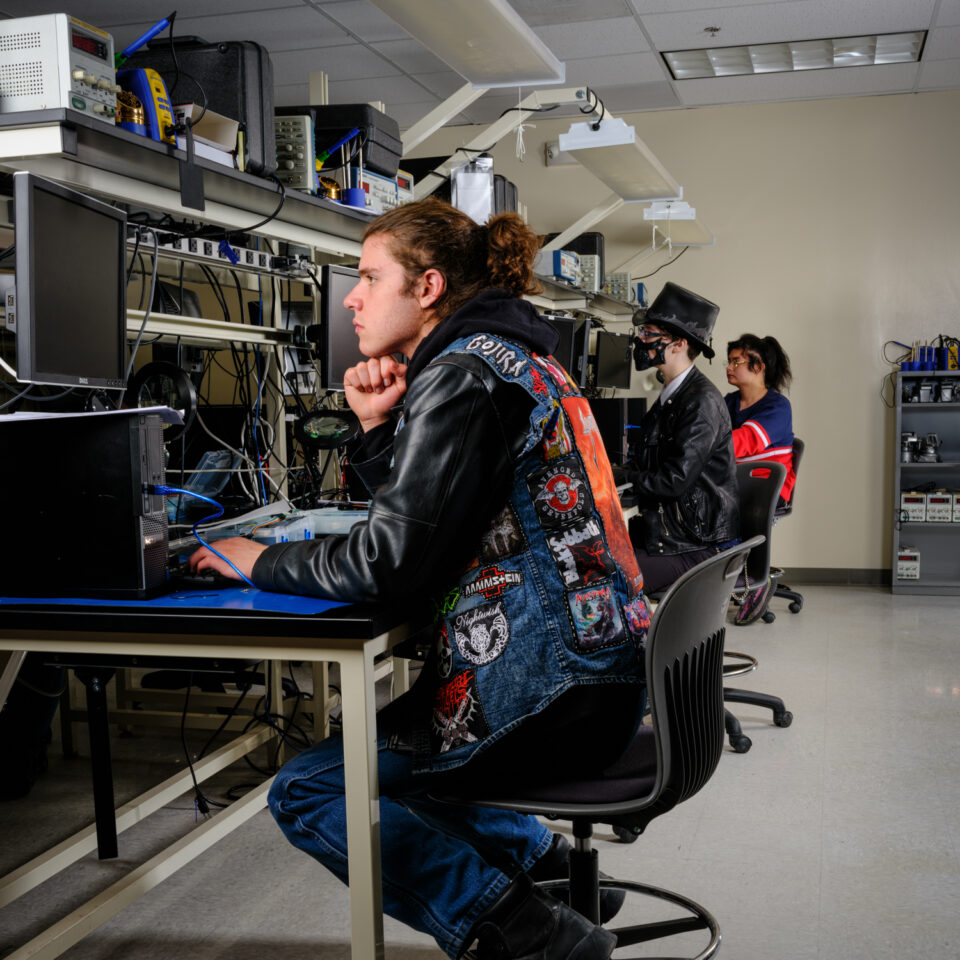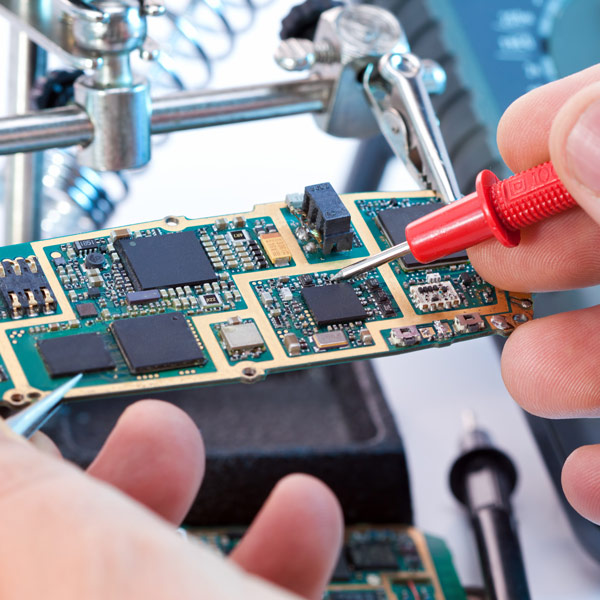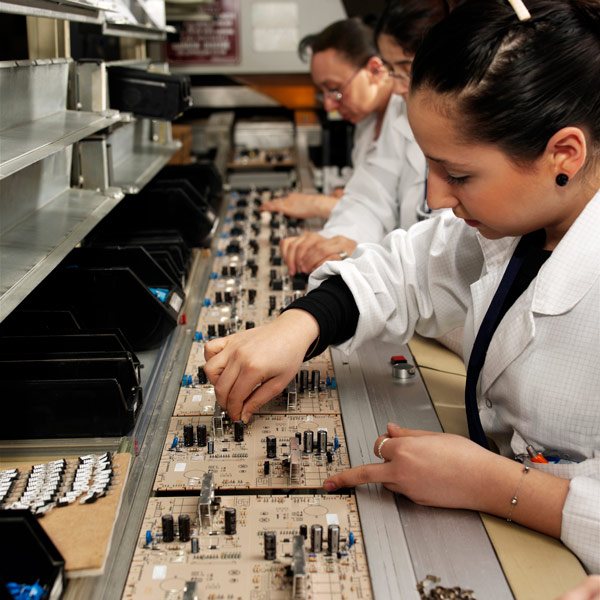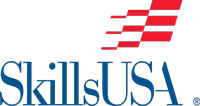Electronics Technician
Set Up, Repair, and Maintain Electronic Systems and Equipment
The Electronics Technician courses are taught over two semesters and consist of electronic theory, laboratory experiments, applied thematics, and practical applications which prepare students to work with solid-state and digital systems. Upon completion of the Electronics Technician courses, the student has the option to seek employment as a Maintenance Technician, Electrical Equipment Technician or Electronic Test Technician.
Program Flyer Steps for Enrollment Pickens Lookbook See the Classroom

What Our Students Learn
- Run performance analyses on electronic devices
- Create prototypes
- Install, modify, and troubleshoot circuits and electronics systems
- Program microcontrollers and robots
- Read and interpret prints and schematics used in the electronics industry
- Analyze and implement basic analog and digital electronic circuits
- Build various electrical circuits and document outcomes

Career Outlook
- Employment opportunity in this field is 4 times higher than the national average of a job
- Entry level salaries start at $39,000 and up
- Median salary is $63,000
- 10% of workers earn $86,000 or more

Program Experience
- Students spend 50% of their time learning concepts in a classroom, and 50% of their time with hands-on practical work
- Students gain experience with industry grade equipment
- Enrollment options are available for both high school students and post-secondary students
- 1 year of classes
Suling Li
Instructor, Electronics Technician
303-344-4910 ext. 27978
sli@aurorak12.org
Industry Certifications & Degrees:
- IPC J-STD-001 Certification
- Bachelors in Electronics Engineering
Accredited Certificate Courses (34 credits)
All credits earned at Pickens technical college are recognized by the Colorado Community College System (CCCS) and are eligible for transfer to other colleges within the state of Colorado.
Introduces the basic skills needed for many careers in electronics and related fields. Covers the operations and applications of basic DC and AC circuits consisting of resistors, capacitors, inductors, transformers and diodes. Emphasizes the use of common test instruments in troubleshooting.
Focuses on diode and transistor studies starting with a review of semiconductor materials. Emphasizes rectifier circuits, R-C and L-C filters, limiters and peak detectors, zener regulators, Schottky diodes, varactors/veristors, LED’s bipolar transistors, transistor approximation, load-lines, biasing techniques, saturation, operating point, AC models including small-signal operation, h-parameters, and data sheet understanding and interpolation.
Introduces the operation and applications of bipolar transistors, JFETs and MOSFETs. Includes switching circuits, single-stage small-signal amplifiers and troubleshooting.
Continues ELT 136 with specifications and additional applications of bipolar transistors, JFETs and MOSFETs. Covers voltage regulation, common-collector, and power amplifiers. Includes analysis of single and cascaded amplifier stages. Emphasizes troubleshooting.
Introduces the operation and application of logic gates, flip-flops, counters, shift registers, encoders-decoders and LED displays. Covers binary numbers, Boolean algebra and troubleshooting.
Continues ELT 147 with emphasis on the operation and application of programmable logic devices, synchronous counters, multiplexers, liquid crystal displays, ROM and RAM. Includes specifications of ICs, display multiplexing, and design and minimization of circuits. Troubleshooting is emphasized.
Covers the theory and practice of high reliability hand soldering in the electronics field. Includes soldering practice with wire and terminal soldering as well as PCB soldering of through-hole and surface-mount devices.
Focuses on a study of integrated operational amplifiers and their applications. Troubleshooting is emphasized.
Covers the fundamentals of programmable logic controllers (PLCs) as they are applied to robotics and automation. Includes history, terminology, typical applications, hardware, and software. Incorporates lab and project activities that address operating, monitoring, programming, troubleshooting, and repairing PLC controlled lab trainers as well as actual industrial equipment.
Provides the necessary software and hardware knowledge and skills to develop a microcontroller system. Incorporates programming tools and development software.
Introduces basic robotics. Enables the student to program a robot in a higher-level language to perform various tasks. Covers building and interfacing of sensor circuits.
Introduces industrial robotics as well as a survey of the technologies and equipment used in manufacturing automation and process control. Includes axis configurations, work envelopes, programming, troubleshooting, and maintenance. Incorporates a survey of automation topics including history, computer and hardwired controls, sensors and transducers, motors and actuators, fluid power, etc. and provides a preview of the other ELT classes that cover those subjects.
Meets the individual needs of students. Students engage in intensive study or research under the direction of a qualified instructor.
